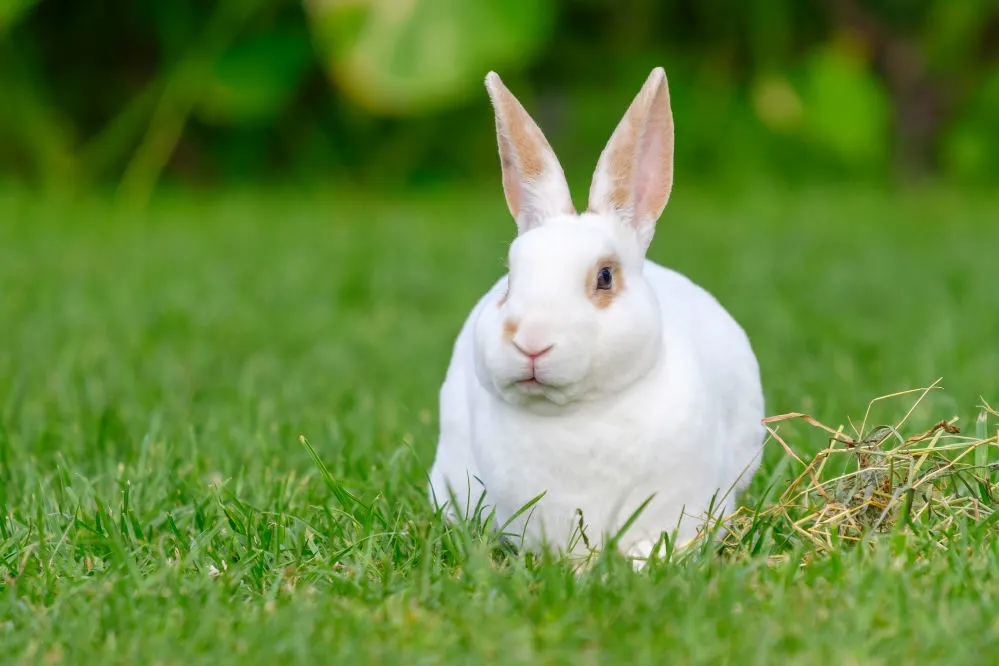There is one thing all rabbit owners can agree on: you want your tiny fluffy roommates to be as healthy as possible. Before you run off to the vet and rack up medical bills, knowing what to look out for would benefit you and your pet. And as with humans, urine can be quite a good indicator of overall health.
So, if you want to sharpen up your bunny health knowledge, then keep on reading. After all, an informed pet owner can only give their indoor rabbit the best life possible. This straightforward, in-depth guide will cover everything you need to know, from what to look out for to when you should take action.
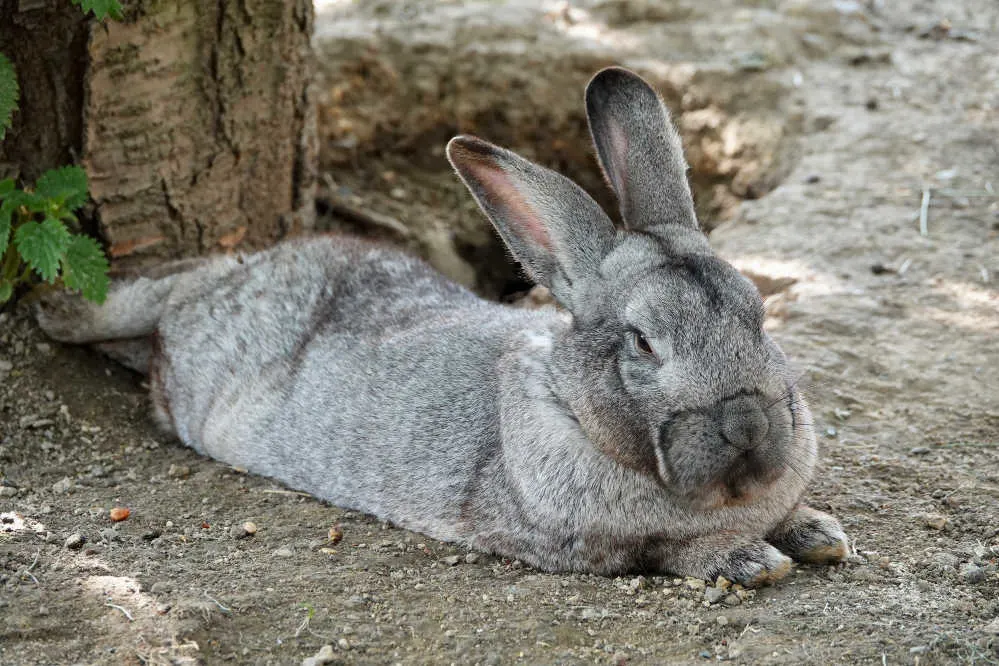
So, let’s get into it and find out what color a bunny’s pee should be.
Psst: Since we’re on the lavatory topic, you might as well get the ins and outs on what rabbit poop looks like.
What does normal rabbit pee look like?
First things first, let’s examine what a regular, healthy rabbit’s urine looks like. Ideally, healthy urine will likely always have a pale yellow or clear color to it. However, there is no set healthy urine color for rabbits.
This means that besides various shades of yellow, your pet rabbit’s pee could range from golden orange to brown and even a red color. And this is without them experiencing any health problems. To sum it up, any color of urine darker than yellow is not always a cause for concern — but it’s definitely something to pay close attention to if it happens frequently.
The reason why it’s not always a health concern is that many other factors could affect the colors of bunny pee. This includes diet changes, maturity, and sex. That said, this post will also include possible health issues that show up in your pet’s urine.
Read Next: When do rabbits sleep?
What urine color tells you about your rabbit’s health
Now that you have an idea of what normal rabbit urine looks like, you can consider the possible meaning behind different colors. This excludes clear urine, which is the most healthy and normal type.
Yellow urine
Bright yellow pee is a sign that your furry friend is pretty healthy. Your pet is eating well and drinking enough fresh water. This means that there are likely no health concerns you need to worry about.
If you start noticing milky yellow rabbit urine, then you should pay attention to your bunny’s health which is covered in the next section.
Read Next: How many rabbit breeds are there?
Thick yellow, cloudy urine
Cloudy or milky urine may be early warning signs of hypercalciuria — a condition that causes abnormal urination, obesity, urinary tract infections, and inflammation. What causes this syndrome is excess calcium, dehydration, and low water intake.
The sludgy urine results from calcium crystals, or calcium “sand,” that form in the urinary system. Hypercalciuria, or just calciuria, increases in frequency over time, so if you notice this type of urine, then you should contact your vet. Other steps you can take are to minimize the number of pellets your rabbit consumes and aim for a lower calcium diet.
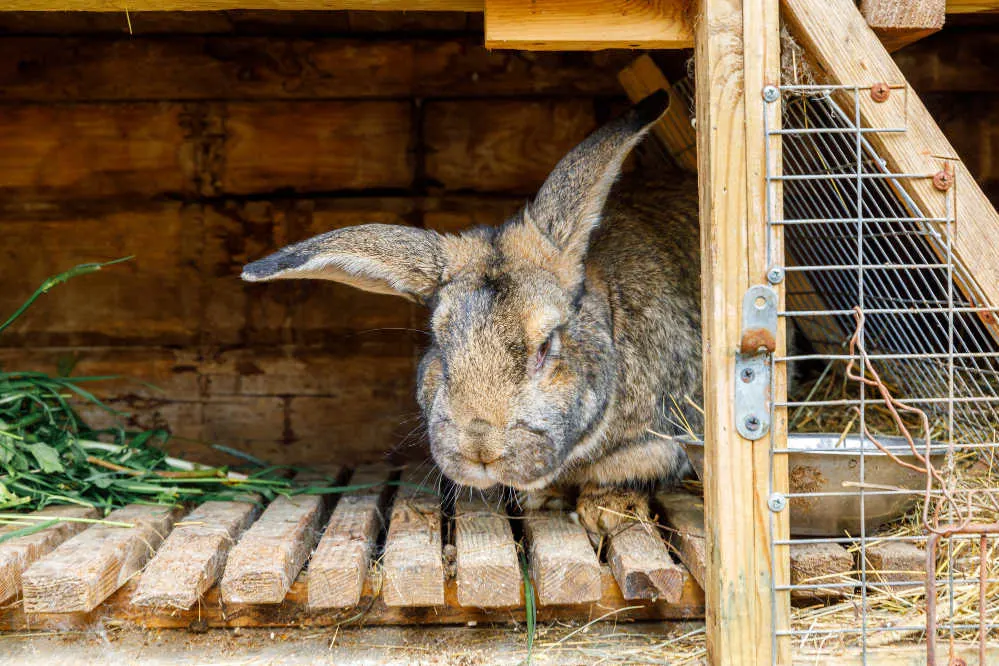
When bunnies have this syndrome, they may feel intense discomfort as the gritty sediments build up in the lining of their bladder, leading to irritation and inflammation. These bladder stones lead to pain, stress, weight loss, frequent urination, and urine scald (pee soaking into rabbit’s fur).
Red urine
Red rabbit urine may not always be a giant warning sign, as it does not always mean you’re seeing actual blood. That’s because red pee is most often caused by plant pigments that are not harmful to your fluff ball.
The red color of the urine may also be sanguineous vaginal discharge in female rabbits due to abortion, polyps, etc. If you see red urine, it’s not a medical emergency, and your rabbit’s urine will probably return to normal after three days.
Of course, if you don’t feed your bunny certain vegetables (covered below) and this red color proceeds for more than three days, you should visit your vet.
But when do you know if it’s actually bloody urine? For starters, urine containing blood is very rare for rabbits, and it’s quite hard to spot with the naked eye.
Unspayed female rabbits may have a bloody discharge that could be mistaken for urine. This could be a sign of uterine cancer. On the other hand, unneutered male rabbits could develop genital cancer that leads to blood in the urine.
What does this all mean exactly? As mentioned earlier, you should consider visiting the vet if your fluffballs urine is still red after more than three days. If it comes and goes, then it’s most likely just due to vegetable pigment or sanguineous vaginal discharge.
Read Next: How much does it cost to neuter a rabbit?
Brown or orange urine
Orange or brown pee is likely nothing to worry about. These colors are completely normal for bunnies. However, in some cases, it could be a possible sign of dehydration.
The best way to prevent dehydration is to provide a water bowl (instead of a water bottle) filled with clean, fresh water daily.
Factors that influence the color of a rabbit’s pee
Let’s have a look at some factors that may alter the color of your rabbit’s pee, whether temporarily or permanently.
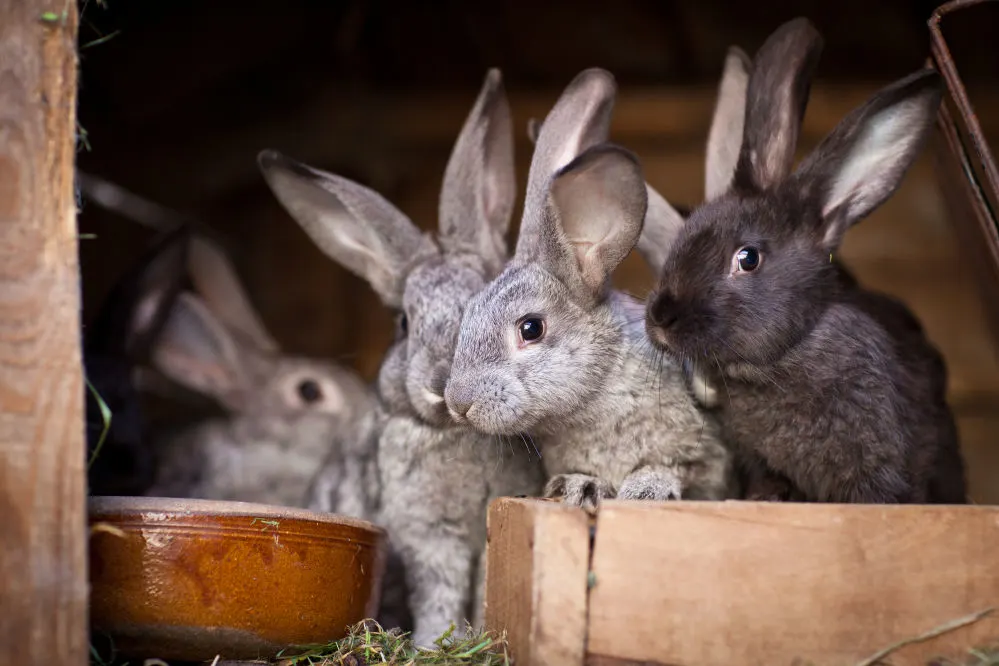
Baby rabbits (kits or kittens)
Like adult rabbits, kits should have amber, red, yellow, clear, or pale-colored pee. Anything murky or cloudy should be a warning sign that something is not quite right. And again, brown or darker urine means your little bundle of fluff may be dehydrated.
Read Next: When do baby rabbits open their eyes?
Pregnant doe
Pregnant or lactating rabbits usually secrete clear urine. This is no big deal, except once you see it turn into a sludgy, white hue caused by too much calcium or urinary tract problems, as seen above.
Plant pigments
Numerous vegetables can alter the color of your pet’s urine, similar to how beetroot causes your pee to change color. This is nothing to stress about at all. So, expect a change in urine hues if you feed your pet the following:
- Dandelions
- Carrots
- Spinach
- Cabbage
- Broccoli
- Red cabbage
- Beetroot leaves
- Fir leaves
Note that most of these veggies contain beta-carotene. You can swap these out for fresh leafy greens, like bok choy and mustard greens if you find the red stains unpleasant in your rabbit’s litter box.
Read Next: Can rabbits have strawberry tops?
Rabbit’s diet
Besides vegetables, there might be other things your rabbit eats that are affecting their pee’s appearance. Commercial rabbit pellets, like alfalfa pellets, can cause bladder sludge and kidney stones in rabbits, resulting in milky, cloudy urine. And as you know by now, a low water intake also affects the color of your rabbit’s pee.
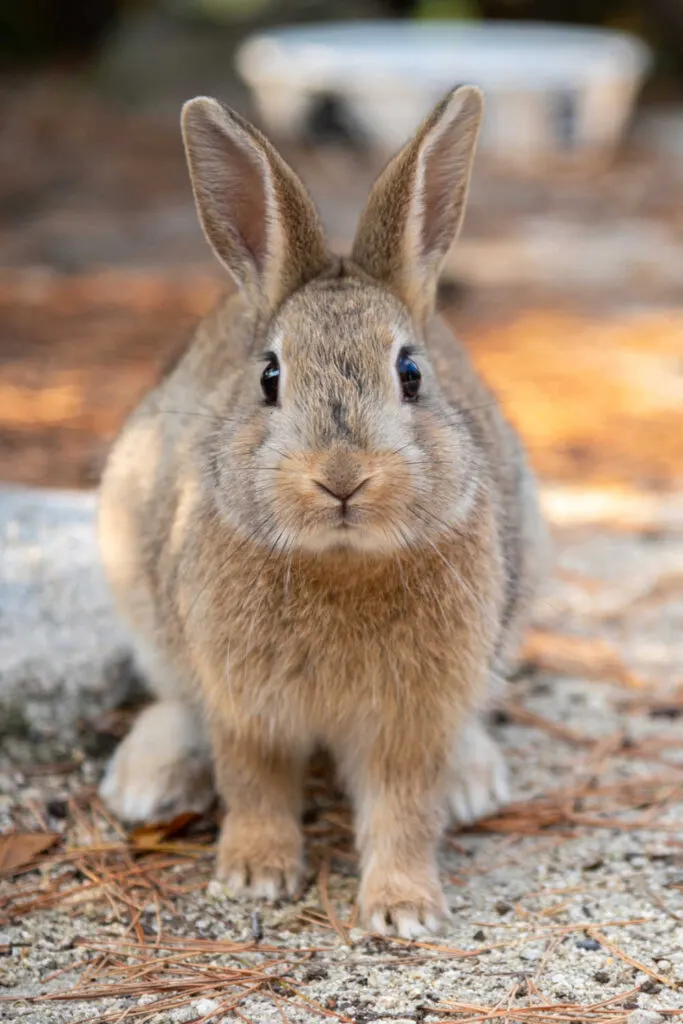
Read Next: Can rabbits have grapes?
Bladder and kidney diseases
Improper kidney function can definitely impact the color of your rabbit’s pee, as discussed above. Red spots in urine or bladder sludge could indicate kidney failure. At the same time, sludge and kidney stones may be caused by tumors, infections, and inflammation in the bladder.
Bacterial infection
Bloody, beige- or brown-colored pee in rabbits could be a result of bacterial infections in the bladder. Along with painful or sludgy urination, your bunny may be suffering from a urinary bladder infection and would need to visit the vet as soon as possible.
E. cuniculi, or encephalitozoon cuniculi, is a pathogen that can spread among rabbits through urinary discharge. This parasite can affect the nervous system and kidneys of a rabbit but won’t be severe if treated promptly. So, if you see any beige/brown color in your pet’s urine, you may want to speak to your local vet. Leaving this parasite for too long can lead to significant health problems.
High-stress levels
Stress levels may impact the consistency and appearance of bunny wee. Did you know that stress can cause a rabbit to develop a urinary tract infection (UTI)? This would then make your rabbit’s pee appear similar to that of a bacterial infection, which is brown or beige.
Other health factors that may cause UTIs are obesity, lack of exercise, low-fiber diets, and unsanitary living conditions.
Wrapping up: What color should rabbit pee be?
If you noticed red or orange urine before reading this post, then you might have freaked out. However, you’re now one step closer to being a bunny guru and understand that their tinkles can come in all colors without them being sick. Still, you want the best for your bun-bun, so keeping a keen eye on their pee will ensure you’re doing just that.
You can give it a couple of days (up to three) to decide whether a trip to the vet is warranted after you notice a change in urine color. As you’ve seen by now, a simple switch in diet, like introducing carrots or dandelions, could alter its appearance. If you come across sludge, milky urine, or bloody urine with red spots, then it’s best to hop in your car and reach the nearest vet.
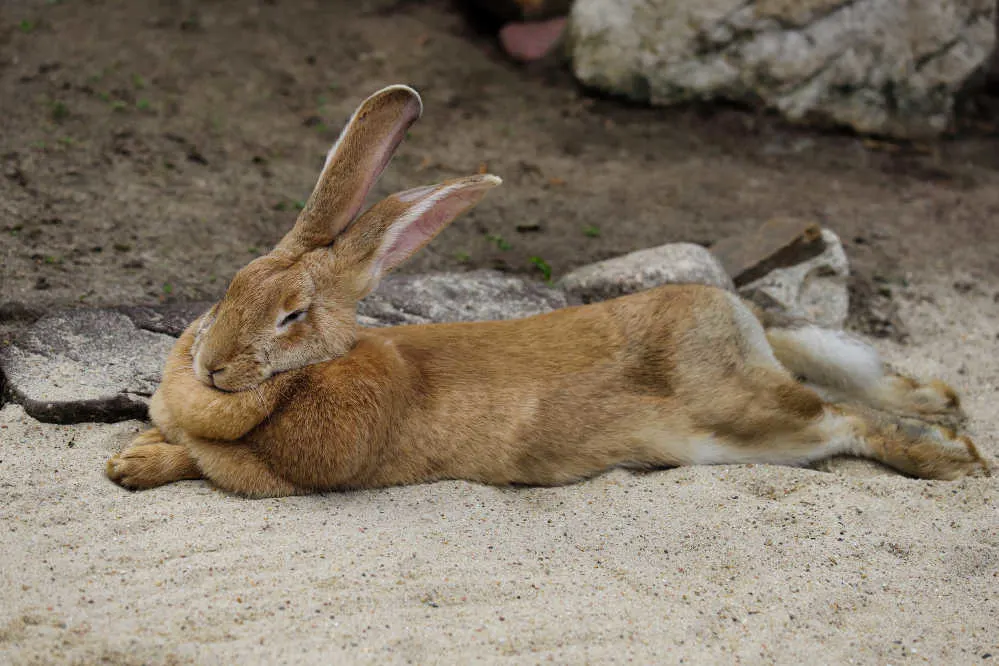
Otherwise, you’ve got this. As long as you feed your bunny a proper diet and keep them hydrated, then all should be good.
Next Up: Can you use cat litter for rabbits?
Steph Dyson is a travel journalist by trade but a lover of all small pets. She’s been a pet mum to everything from gerbils to guinea pigs, rabbits to hamsters, and fish to dogs of all shapes and sizes. She wants to share her years of experience with small pets and make Small Pet Guides the go-to website for pet owners seeking information and care advice.

